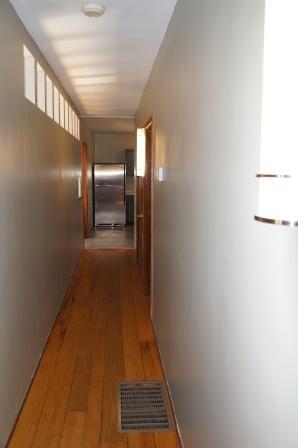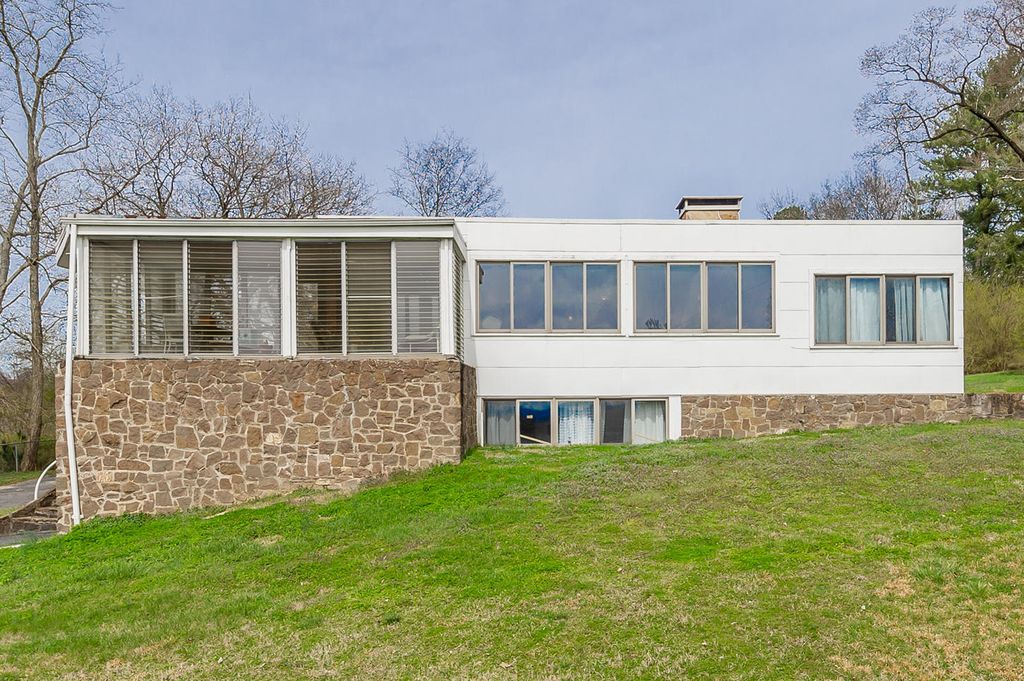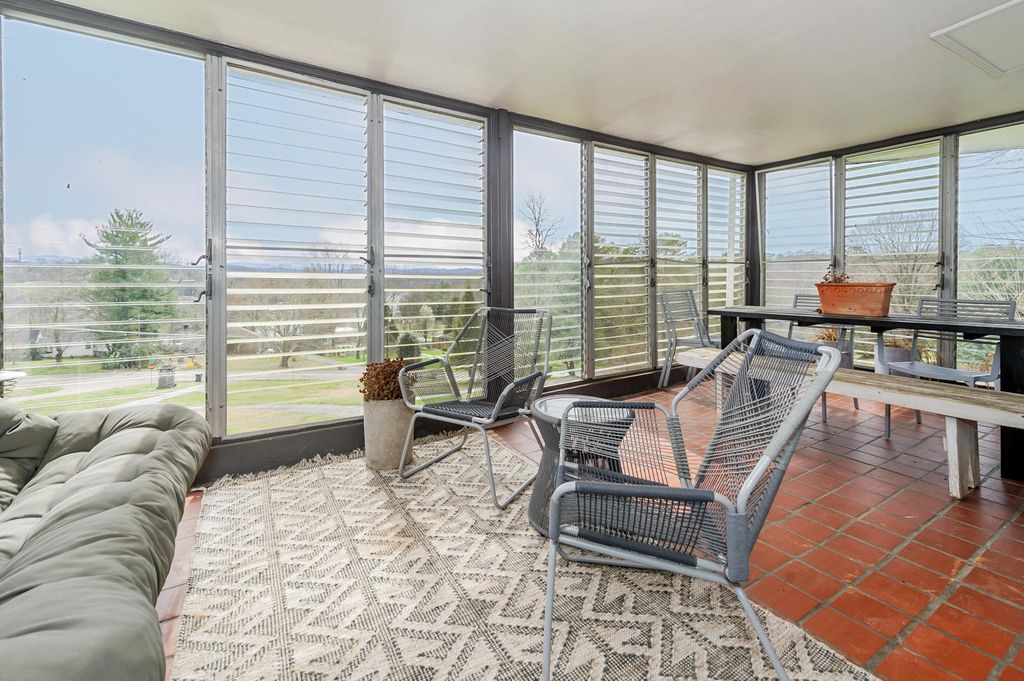
Alright. Where to even start. Alfred Clauss was a German architect. Born in 1906 (in Munich), he started his architectural career working for Karl Schneider. Alfred then did a short stint in Ludwig Mies van der Rohe’s studio (helping to design the German Pavilion for the 1929 Barcelona Exposition). He immigrated to the US later that same year.

Alfred then immigrated to New York, working in the New York office of the Philadelphia-based firm Howe & Lescaze (a firm known for being a hotbed of modernist architects). While at Howe & Lescaze, Alfred helped work on the PSFS Building, now the Loews Philadelphia Hotel). He also met fellow architect George Daub, and the two of them formed a partnership called, aptly, Clauss & Daub.

Now for some controversy. In 1931, the Architectural League of New York was gearing up to hold their annual exhibition on architecture. Clauss & Daub submitted some of their designs to the show, however they were rejected. The league claimed they were “dangerously radical.” Seizing upon this moment, Alfred (with a little help from Philip Johnson, Alfred Barr and Henry-Russell Hitchcock) planned a counter exhibition, the cheekily-named Rejected Architects. This exhibition was bold, brash, and unapologetically modern. It sought to introduce modernist architecture to a more traditionally minded nation. The pamphlet (pictured below) featured Clauss & Daub’s design for a house in Pinehurst, North Carolina on the cover. In total, five of Clauss & Daub’s designs were exhibited during the show.

In 1933, after helping plan the Chicago World’s Fair, Alfred was hired by the Tennessee Valley Authority (TVA), a move which brought him to East Tennessee. In 1934, Alfred married Jane West and the two of them relocated to Knoxville, Tennessee.

A word must be said about Jane West Clauss. From this point on, It is almost impossible to disentangle Alfred’s designs from Jane West’s design. Jane West was a talented architect in her own right, having spent time working the office of Le Corbusier and Pierre Jeanneret. The Clausses were a team who designed and created together, true partners. If you’ve got a moment or two, I highly recommend reading Pioneering Women of Architecture’s write-up on Jane West Clauss.

Ok. Back to Alfred. According to historian Lawrence Wodehouse (in his 1985 essay on Alfred Clauss in Knoxville), Alfred spent his time working at the TVA as an “associate architect in the public relations department, designing visitor’s centers at dam sites and TVA exhibits for local and state fairs”. He also designed some fantastic wartime propaganda posters for the TVA as well.


I need to emphasize this: Alfred and Jane West Clauss’s impact on the modernism of East Tennessee cannot be overstated. I will be the first to admit that this humble blog is just the broad strokes of their life. Hopefully, at some point, I’ll either write or link to a more in-depth look at his life and work.

Alright, it’s about time for some architectural photos, wouldn’t you say? While working for the TVA (from 1934-1945), Alfred and Jane West designed seven houses in the Knoxville area. Five of them are in a their own little community, and I’ll do a write-up on that later. The other two structures were one-off house commissions, so let’s take a look at those.
Structure: Joseph Mengel House
Location: Knoxville, Tennessee
Architect: Alfred Clauss & Jane West Clauss
Date: 1938
Tidbit: Joseph Mengel’s father owned a lumber manufacturing company based out of Louisville, Kentucky called Foreign & Domestic Veneers Inc. The company turned mahogany, walnut, and other lumber into wood that could be used furniture (such as phonograph cabinets). Joseph was one of the vice presidents of the company and, at some point, he and his wife Susan moved to Knoxville to run the Knoxville branch of Foreign & Domestic Veneers.
Interestingly, Foreign & Domestic Veneers Inc was a bit of a local hub, often holding twice-a-week religious services during the workers’ lunch breaks. The company would engage pastors, laymen, and out-of-town visitors to speak to the plant workers.
In 1934, Joseph Mengel’s father (C.C. Mengel) died of a heart attack. When he passed, he left a small fortune to the family, valued somewhere in the neighborhood of $2 million. It was shortly thereafter that the Joseph Mengel decided he was ready to build a custom house. And he didn’t just want any old custom house, he wanted a modernist house. Friends from the TVA introduced him to the Clausses, so he had the couple design him and his family an exceedingly attractive house. Surprising no one, Joseph supplied all of the woods for the house (using a bevy of expensive woods such as pecan for the floors and redwood for the exterior).









Unfortunately, the Mengel house has been, well, mangled through years of renovations.

Structure: Henry Hart House
Location: Knoxville, Tennessee
Architect: Alfred Clauss & Jane West Clauss
Date: 1943
Tidbit: One of the most spectacular examples of modernism in East Tennessee, this house was designed for Henry C. Hart and his wife Virginia. In 1936, Henry graduated from Vanderbilt, and came to work for the TVA (in the personnel department).

At some point, Henry and his wife became friends with Alfred and Jane West, so it makes a lot of sense that they would design them a house. One local paper noted that the Hart’s “live[d] of eccentric design.” How eccentric was it? Let’s have a look.






Shortly after the house was finished, the Dies Committee discovered that Henry had, at one time, been a member of the Communist Party. Having been exposed, Henry sold his house, was drafted into the army, and only ever came back to Knoxville to visit Alfred and Jane West.
After his army service, Henry moved to Madison, Wisconsin and taught at University of Wisconsin–Madison. Henry’s dad was a professor at Columbia University so that transition was probably a pretty natural one. Virginia Hart went on to become Wisconsin’s first female cabinet member.


















2015 listing photos (above) and 2019 listing photos (below). As you can see, the original screened-in porch was converted into a room, and the house is slowly being HGTV’d (especially in the kitchen area). Here’s hoping the new owners will restore it back to its original beauty…word on the street is they will!



























